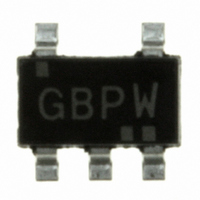S-8241ABPMC-GBPT2G Seiko Instruments, S-8241ABPMC-GBPT2G Datasheet - Page 19

S-8241ABPMC-GBPT2G
Manufacturer Part Number
S-8241ABPMC-GBPT2G
Description
IC BATT PROTECTION 1CELL SOT23-5
Manufacturer
Seiko Instruments
Datasheet
1.S-8241ABPMC-GBPT2G.pdf
(38 pages)
Specifications of S-8241ABPMC-GBPT2G
Function
Over/Under Voltage Protection
Battery Type
Lithium-Ion (Li-Ion), Lithium-Polymer (Li-Pol)
Operating Temperature
-40°C ~ 85°C
Mounting Type
Surface Mount
Package / Case
SC-74A, SOT-753
Product
Li-Ion Protection
Output Voltage
8 V
Operating Supply Voltage
1.5 V to 8 V
Supply Current
5 uA
Maximum Operating Temperature
+ 85 C
Minimum Operating Temperature
- 40 C
Mounting Style
SMD/SMT
Uvlo Start Threshold
1 V
Uvlo Stop Threshold
0.4 V
Lead Free Status / RoHS Status
Lead free / RoHS Compliant
Other names
728-1033-2
Available stocks
Company
Part Number
Manufacturer
Quantity
Price
Company:
Part Number:
S-8241ABPMC-GBPT2G
Manufacturer:
SEIKO
Quantity:
39 856
Rev.9.0
3. Overcharge Status
When the battery voltage becomes higher than the overcharge detection voltage (V
status and the state continues for the overcharge detection delay time (t
control FET off to stop charging. This status is called the overcharge status.
The overcharge status is released in the following two cases ((1) and (2)) depending on the products with and without
overcharge hysteresis:
Products with overcharge hysteresis (overcharge detection voltage (V
Products without overcharge hysteresis (Overcharge detection voltage (V
(1) When the battery voltage drops below the overcharge release voltage (V
(2) When a load is connected and discharging starts, the S-8241 turns the charging control FET on and returns to the
(1) When the battery voltage drops below the overcharge release voltage (V
(2) When a load is connected and discharging starts, the S-8241 turns the charging control FET on and returns to the
Remark If the battery is charged to a voltage higher than the overcharge detection voltage (V
FET on and returns to the normal status.
normal status. The release mechanism is as follows: the discharging current flows through an internal parasitic
diode of the charging FET immediately after a load is connected and discharging starts, and the VM pin voltage
increases about 0.7 V (Vf voltage of the diode) from the VSS pin voltage momentarily. The IC detects this voltage
(being higher than the overcurrent 1 detection voltage) and releases the overcharge status. Consequently, in the
case that the battery voltage is equal to or lower than the overcharge detection voltage (V
normal status immediately, but in the case the battery voltage is higher than the overcharge detection voltage (V
the IC does not return to the normal status until the battery voltage drops below the overcharge detection voltage
(V
detection voltage when a load is connected and discharging starts, the IC does not return to the normal status.
FET on and returns to the normal status.
normal status. The release mechanism is explained as follows : the discharging current flows through an internal
parasitic diode of the charging FET immediately after a load is connected and discharging starts, and the VM pin
voltage increases about 0.7 V (Vf voltage of the diode) from the VSS pin voltage momentarily. Detecting this voltage
(being higher than the overcurrent 1 detection voltage), the IC increases the overcharge detection voltage about 50
mV, and releases the overcharge status. Consequently, when the battery voltage is equal to or lower than the
overcharge detection voltage (V
voltage is higher than the overcharge detection voltage (V
status until the battery voltage drops below the overcharge detection voltage (V
connected. If the VM pin voltage is equal to or lower than the overcurrent 1 detection voltage when a load is
connected and discharging starts, the S-8241 does not return to the normal status.
Remark If the battery is charged to a voltage higher than the overcharge detection voltage (V
_00
CU
) even if the load is connected. In addition if the VM pin voltage is equal to or lower than the overcurrent 1
voltage does not drop below the overcharge detection voltage (V
causes an overcurrent, is connected, the overcurrent 1 and overcurrent 2 do not work until the battery
voltage drops below the overcharge detection voltage (V
internal impedance of several dozens of mΩ, and the battery voltage drops immediately after a heavy load
which causes an overcurrent is connected, the overcurrent 1 and overcurrent 2 work. Detection of load
short-circuiting works regardless of the battery voltage.
voltage does not drop below the overcharge detection voltage (V
which causes an overcurrent, is connected, the overcurrent 1 and overcurrent 2 do not work until the
battery voltage drops bellow the overcharge detection voltage (V
however, an internal impedance of several dozens of mΩ, and the battery voltage drops immediately after
a heavy load which causes an overcurrent is connected, the overcurrent 1 and overcurrent 2 work.
Detection of load short-circuiting works regardless of the battery voltage.
CU
) + 50 mV, the S-8241 immediately returns to the normal status. But the battery
Seiko Instruments Inc.
BATTERY PROTECTION IC FOR 1-CELL PACK
CU
) + 50 mV, the S-8241 does not return to the normal
CU
CU
CU
). Since an actual battery has, however, an
) > overcharge release voltage (V
) or longer, the S-8241 turns the charging
CU
CL
CU
CL
) = Overcharge release voltage (V
), the S-8241 turns the charging control
), the S-8241 turn the charging control
CU
) + 50 mV. Since an actual battery has,
CU
) + 50 mV even when a heavy load,
) even when a heavy load, which
CU
) during charging under normal
CU
) + 50 mV even if a load is
CU
), the IC returns to the
S-8241 Series
CU
CU
) and the battery
) and the battery
CL
))
CL
CU
))
19
),

















